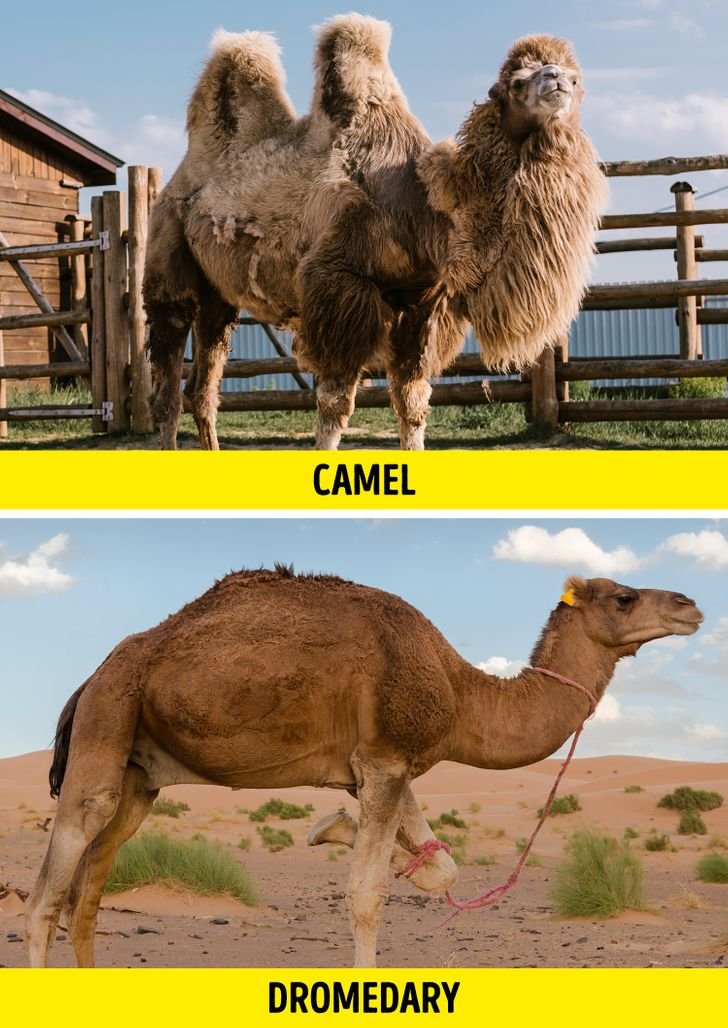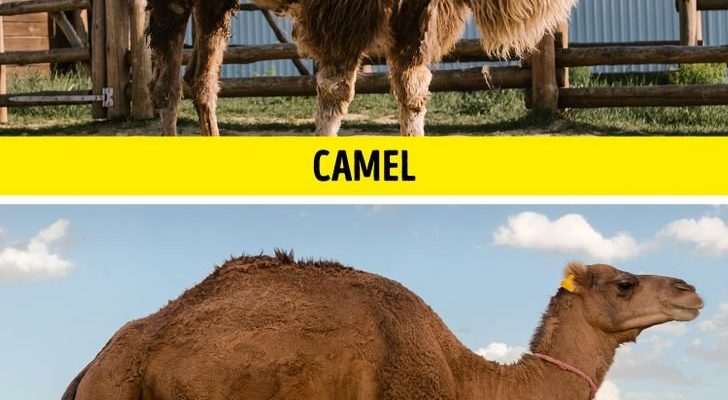
Just like how we have our distinct features that set us apart from others, these animals also have their own quirks and characteristics. Whether it’s their habitat, body structure, or social behavior, each one tells its own story. So grab your favorite drink, and let’s dive into the world of camels and their look-alikes!
1. Alpaca
Alpacas are often mistaken for small, woolly camels due to their similar body shapes and long necks. You might think they’re just baby llamas, but they belong to a different species and have their roots in South America.
Alpacas have a softer, fluffier coat than camels, which makes them sought after for wool. They are also smaller—standing about 3 feet tall at the shoulder, while camels can tower over you! Now, if you encounter an alpaca, look at their ears; they are spear-shaped and tend to perk up when they’re curious. Camels, on the other hand, have long, curved ears.
2. Llama
Llamas, like alpacas, hail from South America and share a family tree with camels. If you put a llama beside a camel, you might see some similarities, especially in their long necks and slender bodies. But here’s the thing: llamas are generally bigger, often reaching heights of around 4-5.5 feet.
Llamas also have a more pronounced face compared to camels. Their ears are longer and more banana-shaped, which is a quick way to tell them apart. Plus, llamas can be quite vocal. Ever heard a llama make a sound? It’s a mix between a hum and a cluck!
3. Dromedary Camel
You might think, “Wait, isn’t a dromedary just a type of camel?” You’re right! But it’s essential to mention them since they are distinct from their two-humped cousins, the Bactrian camels. Dromedaries are the more common type, recognized for their single hump and are primarily found in North Africa and the Middle East.
While they share physical features like long legs and a large body, the dromedary’s hump is made mostly of fat, which is crucial for survival in arid environments. If you see a camel with a single hump, you’ve spotted a dromedary!
4. Bactrian Camel
Now let’s get into the two-humped siblings of the camel family! Bactrian camels are native to Central Asia and are built for cold climates, unlike their dromedary cousins. They tend to be stockier and have thicker fur to handle chilly temperatures.
The key difference? Those two humps! This adaptation allows them to store more fat, which they can metabolize for energy when food is scarce. If you’re in the Gobi Desert or Mongolia, keep an eye out for these guys!
5. Vicuna
Vicunas are like the wild cousins of llamas and alpacas, found in the Andes mountains. They have a sleek, slender appearance and are quite agile. Although they look similar to the other South American camelids, vicunas are much smaller, standing only about 3 feet tall.
One defining feature is their fine wool, which is considered one of the most luxurious in the world. Keep in mind that while they may remind you of camels, they inhabit a different environment—high-altitude grasslands.
6. Guanaco
Guanacos are another relative of llamas and alpacas. They roam the Patagonian regions of South America. With a similar body structure to llamas, guanacos are typically a bit leaner and built for speed, allowing them to escape predators more easily.
Their coarse fur and sleek build set them apart from camels, which are bulkier. Plus, guanacos are known for their social behavior, often found in groups, while camels tend to be more solitary creatures.
7. Maned Wolf
Though it may not look like a camel at first glance, the maned wolf shares some ecological similarities. It’s known for its long legs and unique appearance, which can be reminiscent of a camel’s gait. Maned wolves are not related to camels but share their habitat in eastern South America.
What sets them apart? Maned wolves are much taller (up to 3 feet at the shoulder) and have distinctive orange-colored fur and large ears. They are nocturnal and have a unique whining bark that sounds quite different from any camel’s grunt.
8. Giraffe
You might be surprised to see giraffes on this list, but hear me out! Giraffes are known for their long necks and towering heights, similar to camels. Both animals are adapted to their environments, with camels in arid regions and giraffes in savannas.
The main difference is in their body structure. Giraffes are much taller, reaching up to 18 feet, and have a more slender body compared to the bulky frame of a camel. Their spots also add an extra layer of distinction—definitely not camely!
9. Okapi
The okapi, though not as visually similar, shares some characteristics with camels when it comes to their habitat and dietary needs. Found in the rainforests of the Democratic Republic of Congo, okapis have a unique blend of zebra-like stripes on their legs and a horse-like body.
What makes them similar to camels is their ability to thrive in tough environments and their generally solitary nature. However, an okapi is much smaller and has a significantly different appearance with its distinct coloration.
10. Horse
Last but not least, horses share some similarities with camels, especially in terms of their domestication and utility for humans. Both can be trained for riding and carrying loads, making them invaluable in various cultures.
The primary differences lie in their physical characteristics. Horses are generally more muscular and athletic, with shorter necks and a variety of coat colors. While camels are built for endurance and heat, horses are built for speed and agility.
So, there you have it! Ten animals that share some similarities with camels, from llamas to giraffes. While they may look a bit alike at first glance, each has its unique features that set it apart. Understanding these differences not only enriches your knowledge but can also help in appreciating the diversity of the animal kingdom.
Next time you come across a camel or one of its look-alikes, you can impress your friends with your newfound knowledge. Remember, nature is full of fascinating creatures, each with its quirks and roles to play!

